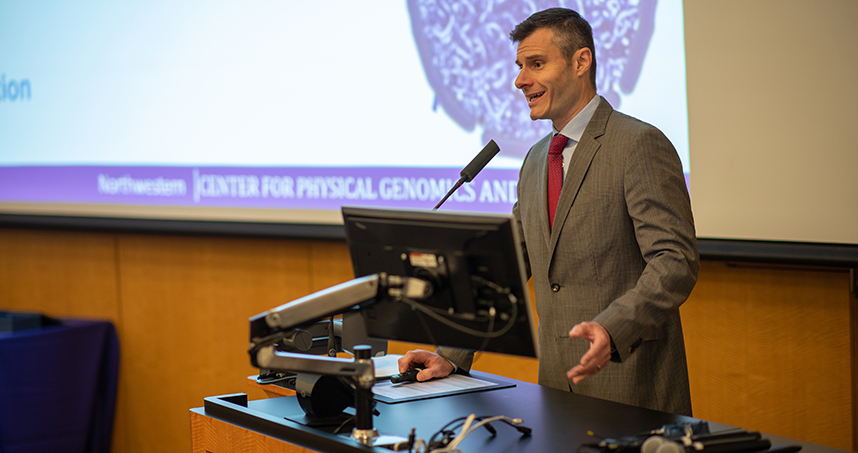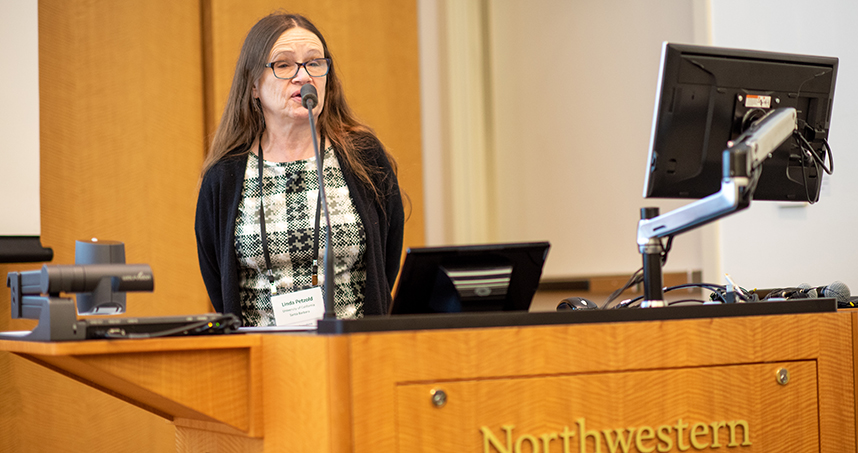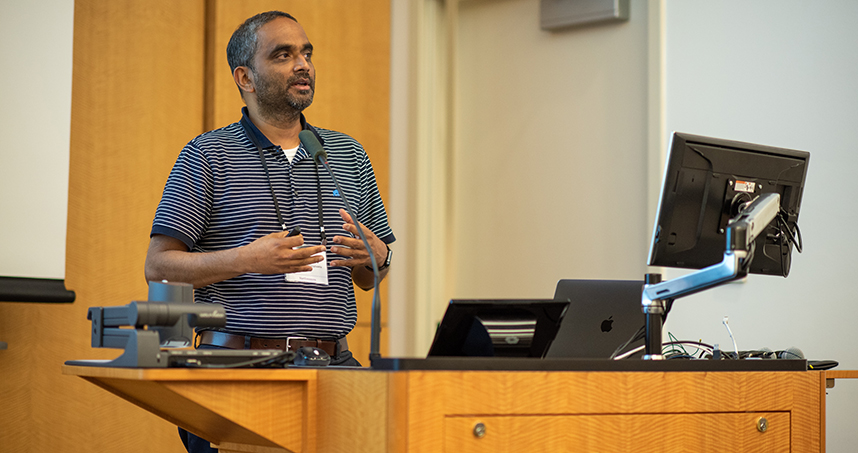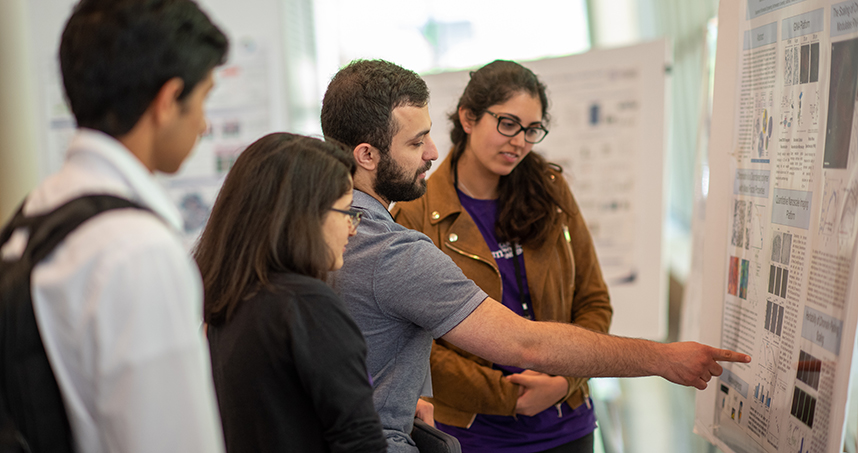Center for Physical Genomics and Engineering Launches
At symposium celebrating launch, researchers shared vision for burgeoning field
The Center for Physical Genomics and Engineering officially launched May 31, with a symposium that brought together top faculty, students, researchers, and industry members in the field.
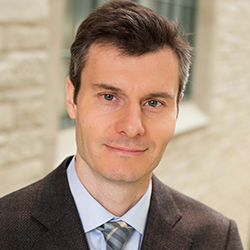 The Center, led by Northwestern Engineering’s Vadim Backman, uses breakthrough optical imaging and computational genomics to reprogram the genome's chromatin, which regulates gene expression, in order to treat disease and engineer living systems to overcome environmental challenges.
The Center, led by Northwestern Engineering’s Vadim Backman, uses breakthrough optical imaging and computational genomics to reprogram the genome's chromatin, which regulates gene expression, in order to treat disease and engineer living systems to overcome environmental challenges.
At the symposium on Northwestern’s Chicago campus, Backman, the Walter Dill Scott Professor of Biomedical Engineering at the McCormick School of Engineering, and other researchers shared their latest insights, and offered their thoughts on where the field should focus going forward.
Potential impact on therapeutics
Owen Wallace, chief scientific officer of Fulcrum Therapeutics, which develops therapeutics for diseases that arise from the faulty regulation of a single gene, said his company’s approach is centered on understanding the root causes of disease — specifically, what gene is misregulated, and what biochemical targets they could modulate with a small molecule to treat the disease.
The company has been developing a therapeutic for facioscapulohumeral muscular dystrophy, a progressively muscular degenerative disease that begins in the face and works its way down the body. Most patients are diagnosed in their teens and end up in a wheelchair by their fifties.
The root cause of the disease is the misexpression of a gene called DUX4. Wallace’s company set out to model the disease, find potential targets, look for molecules that could regulate the expression of DUX4, then see if there were any unintended consequences of potential therapies. The company found a potential inhibitor that could work as a therapeutic and is working to fully understand its effects.
“We think that the modulation of gene expression has the potential to treat rare genetic diseases at their root cause,” he said. “We think that pathways that regulate gene expression that are accessible to therapeutics likely have an impact on chromatin architecture. Physical genomics are going to play an increasingly important role in therapeutic discovery.”
How structure and function are related
Vivek Shenoy, professor of materials science and engineering at the University of Pennsylvania, studies the impact of mechanical forces on biological signaling and cell function. Forces outside the cell have the ability to shape the nucleus, which in turn has an effect on gene expression.
“As many as 400 genes can be expressed differently, depending on the cell shape,” he said. And the forces include ones that govern our everyday lives. “When you sit or lay down, there is a level of stress on the tissue that impacts cell response.” That is why physicians and researchers often stress the importance of moving around. “Every hour you have to stand up,” he said.
Shenoy is creating models of how the nucleus changes shapes based on different external forces — a difficult task, since the cell itself is a complex network of parts and forces. When asked what he thought the major knowledge gap was in the field of physical genomics, Shenoy said he wondered about the complexity of the field. While physics is based on a standard set of rules, does such a set exist for physical genomics? “Will we need machine learning, or can it be couched in a few simple statements?” he said.
A multidisciplinary approach to physical genomics
The symposium included eight scientific presentations and a poster session. Other speakers included:
- Josée Dostie, professor, biochemistry, McGill University
- Felice Elefant, professor, biology, Drexel University
- Tom Misteli, director, Center for Cancer Research, National Cancer Institute
- Linda Petzold, professor, computer science and mechanical engineering, UC Santa Barbara
- GV Shivashankar, deputy director, Mechanobiology Institute, National University of Singapore
- Wei Wang, professor, chemistry and biochemistry; cellular and molecular medicine, UC San Diego
After the launch, the Center will continue to develop physics-based approaches to addressing diseases in which global genomic reprogramming plays a role, including Alzheimer’s disease, atherosclerosis, and developmental diseases. The technique has the ability to go beyond medicine and could also be used to improve crop yields and mitigate the impact of climate change on plants.
In addition to leading the field in physical genomics research, the Center will also train next-generation leaders engaged in research that bridges molecular biology, bioengineering, physics, and chemistry.
